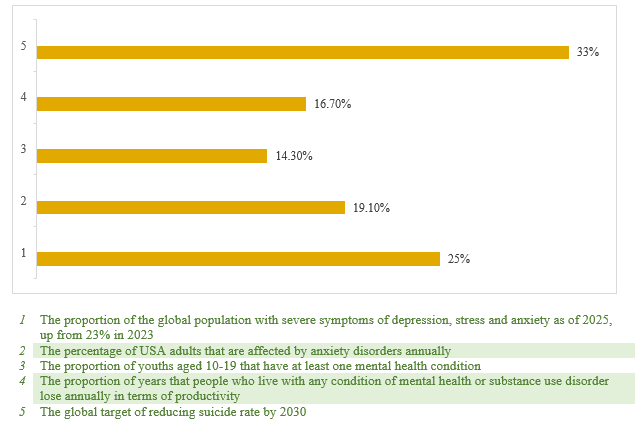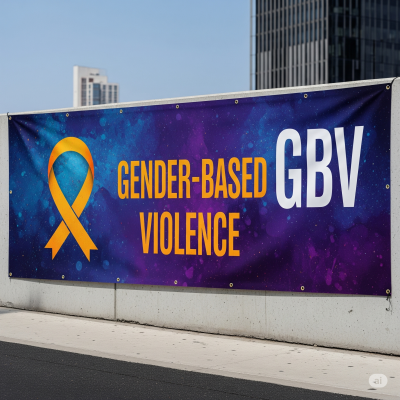In this blog article, I will share a story about Senny’s journey in the remote village of Koitilo, where silence, trauma, and resilience intertwine to shape lessons on mental health and inclusion.
In the remote village of Koitilo, where the sun-scorched plains stretched endlessly under a vast African sky, Senny's story began not with hope, but with a legacy of unspoken pain. At just thirteen, her mother, a fragile orphan raised by a domineering uncle, had endured unimaginable trauma. The uncle, as the family's sole provider, had repeatedly abused her starting at age ten, leaving her trapped in a cycle of anxiety that gnawed at her soul. Teachers noticed her withdrawn demeanor but dismissed it as commonplace, while her aunt, fearing brutal retaliation and community neglect, remained silent. She couldn’t soil her man's esteemed reputation. This silence birthed Senny in grade four, forcing her mother to abandon her education. The rigid customs of the land prohibited women from criticizing their men.
Married off to a 43-year-old man as his third wife, Senny’s mother received little more than a hollow title. The husband shirked his duties, compelling her to scrape by without skills or support, plunging her deeper into depression. At nineteen, while giving birth to a third child, she succumbed to complications, and the newborn perished soon after due to the family's ignorance of proper weaning and lack of resources.
Orphaned and vulnerable, nine-year-old Senny and her younger brother Leon were absorbed into the stepmother's household, confined to their late mother's humble hut. But the shadows of the past loomed large. The foster father, emboldened by impunity, began mistreating Senny, igniting a fresh torrent of trauma. The stepmother, paralyzed by fear, echoed the aunt's silence. Seeing her man take advantage of his daughter hurt her mentally, but she couldn’t speak. Silence was the unquestionable place of women in Koitilo, and violation of this rule had dire consequences.
With no one on her side, Senny's world crumbled under the weight of stress and isolation. At school, other students laughed at her, others isolated her. Within no time, her once-bright spirit dimmed; she withdrew from friends, succumbing to loneliness and social exclusion that amplified her low self-esteem. Gloomy and detached, she navigated the impossible juggle of caring for her brother Leon, enduring the abuse from someone that should be protecting her in the absence of her late mom, and clinging to her studies to safeguard her future. Her grades plummeted, and in the quiet hours, suicidal thoughts whispered like relentless echoes, tempting her to escape the unrelenting pain.
Yet, amid this despair, a beacon emerged in Ms. Monique, Senny's class teacher. Trained through the Youth First program by the nonprofit Basic Needs, Ms. Monique had honed her skills in recognizing signs of mental deterioration; subtle shifts like isolation, declining performance, and pervasive gloom. Drawing on her lessons in empathetic inquiry and intervention, she gently pulled Senny aside one afternoon, away from prying eyes. "Tell me what's weighing on your heart," she said softly, her voice a lifeline in the storm.
Tears streaming, Senny unraveled her story: the mistreatment, the crushing responsibility for Leon, the suicidal thoughts that haunted her nights. Ms. Monique listened without judgment, her training guiding her to validate Senny's pain and act swiftly. Discreetly involving the headteacher, they arranged for Senny's placement in a nearby girls' rescue center, a sanctuary offering counseling, safety, and stability. Leon, meanwhile, received extra school lunches to stave off hunger at home at dinner time, as lack of food was found to be a major cause of suffering by Monique and the headteacher. Apparently, the headteacher knew how important it was to take a legal course in the case, but preferred a simple approach to salvage Senny and Leon.
In the rescue center's nurturing embrace, Senny began to heal. Therapy sessions addressed her depression and low self-esteem, while peer support chipped away at her loneliness and social exclusion. Playfulness returned to her eyes, and her academic spark reignited — she topped her class in grade six with one of the highest scores. Now in grade nine, Senny thrives as the brightest student, her foster home actively seeking sponsors for her high school journey. Ms. Monique beams with certainty: "She's destined for greatness."
Interestingly, Leon, too, blossoms under the stepmother's care. Inspired by his resilience, the stepmother joined Basic Needs' community empowerment program, becoming part of a 20-member women's group. Through collective savings matched quarterly by the organization, she has alleviated her own anxiety about providing for the children. She cherishes Leon for introducing her to this path, watching proudly as he steps into grade six with dreams of becoming a news anchor. Dubbed the "Koitilo Correspondent," he delights assemblies every Friday with witty recaps of the week's school events, his jokes a testament to the family's emerging joy.
Now, lets go straight into what it teaches us about mental health and inclusion
Mental Wellness at a Glance
When we talk about mental health, what comes into our mind? Emotional, psychological, and social well-being. Some people are affected by a few of these, while others have to deal with all of them concurrently. What strikes us most is how these play a significant role of influencing how individuals think, feel, and act. Today, we can’t run away from the fact that mental wellness is one of the key mental health challenges — a significant public health issue, with conditions like anxiety and depression being the most prevalent. Let’s have a look at some of the key facts on the subject:
| 1 billion | The total number of people who live with mental health disorders globally as of 2025 |
| 301 million | The total number of people suffering from chronic anxiety and depression that leads to long term disability globally |
| 970 million | The number of people that suffer from substance use and mental health disorders worldwide |
| 727,000 | The number of suicides that occur annually, where the youthful population is leading |
| 1 trillion | The annual productivity loss rate in USD as a result of long-term disability that is connected to anxiety and depression |
| 13 | The number of mental health workers per 100,000 people worldwide |
| 11 | The average number of years that mental health challenges like depression and anxiety go untreated as a result of stigma |
| <2-3% | Percentage of healthcare budgets that are allocated to mental health globally |
| 9.3% vs 11.9% | The ratio of males to females who suffer from any mental health or substance use disorder |
Mental health affects every aspect of our lives — how we view ourselves, how we live at home, how we interact with our communities, and what we do when we are alone or surrounded by others. It affects the outcomes of our education. Home and workplace relationships are also affected by our mental wellness. That even people from developed nations is a signal that none of us is immune to mental health problems. It is either we are victims of mental wellness or are all potential victims of poor mental health.

Mental Wellness, Isolation, and Inclusion — A Tight bond with a huge impact
Senny’s case illustrates how a combination of mental health challenges and financial hardship can double the risk of social exclusion, affecting education, employment, and interpersonal relationships. The exclusion not only elevates perceived stress but also undermines fundamental psychological needs, heightens anxiety and depression, heightens suicidal ideation, and self-harm, negatively impacting autonomy and competence. We see how people with mental health problems that face stigma, tend to exhibit low self-esteem, even at childhood. The symptoms tend to worsen when these people are directly or indirectly restricted from accessing opportunities because of their condition. Failure to identify and intervene may entrench exclusion, exacerbating the victims’ mental health symptoms, diminishing overall quality of life further.
A Utilitarian Picture of Mental Ill-health Interventions
More importantly, Senny's journey, from the depths of isolation and suicidal thoughts to a horizon of promise, reminds us that addressing mental health problems need not be a solitary battle. We must be one another’s keeper. We must be empathetic enough to walk the journey of the victims. We should not be judges, critics and defeatists, but builders rather than agents of further destruction. We must be cautious — able to balance harm and good that can come out of our actions. With empathy, intervention, and community support, even the most fractured spirits can mend, turning cycles of pain into stories of triumph. What are our options when we are faced with a mental health issue? Mental wellness interventions that address both mental health and socioeconomic factors, such as poverty, are essential to reducing exclusion and improving long-term outcomes.

I know quite a number of us are considering the headteacher and Monique as indirect supporters of child abuse for not escalating the case of Senny’s father. However, we need to balance our options. What could happen if Senny’s stepfather got arrested and charged, spending years in prison? Suffering of the other family members, more suffering for Senny and Leon and maybe, a community backlash after the post-imprisonment issues are witnessed by the community members. The possibilities are few but with a bigger subsequent mental health impact. I am not supporting child abuse or anything to do with abuse whether for an adult, youth or child. Anybody who is guilty of any crime — including rapists, thieves and burglars — must face the full force of the law and bear the consequences of their actions accordingly. My use of Senny’s case seeks to draw a picture on what could happen if our response to crimes that perpetuate mental issues are more reactionary than rehabilitative. As we pursue justice for the victims, we must ensure that we perpetuate better communities. We need to make calculated moves that can lead to positive outcomes in general. Our greatest question is how we can do this.




